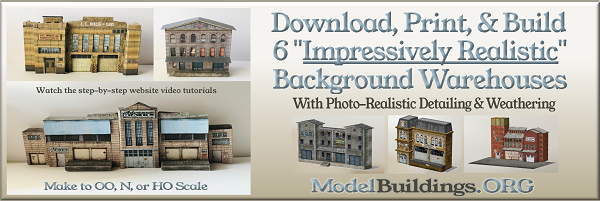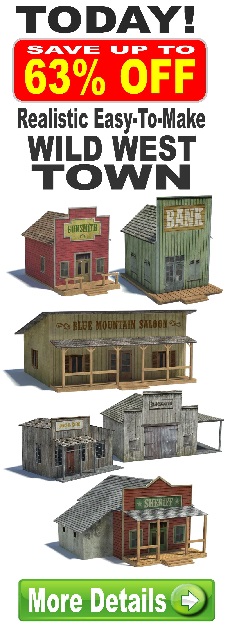Everything on model trains, model railroads, model railways, locomotives, model train layouts, scenery, wiring, DCC and more. Enjoy the world's best hobby... model railroading!
Getting Started in Model Railroading
William asks readers:
“I want to start in model railroad with my two grandsons. Which is the best way to start; buying a ready built set or buy individual pieces? I will start small and gradually build to a larger layout. Any suggestions please.”
4 Responses to Getting Started in Model Railroading
Leave a Reply
















I would start with a boxed set in DCC to keep them up with technology preference a freight set then they can do some switching etc add a couple of sidings even it means buying a couple of turnouts and some extra track they would soon get bored with it just going round and round.
A boxed set is definitely the way to go. You didn’t mention the age of your grandsons. This is important as you would be well advised against getting a smaller scale if they’re too young. If they are old enough, then by all means get the scale they can work with. A simple 4 x 8 sheet of plywood would be the cheapest and easiest base for a layout. You can start with a small track plan and add as interest develops. There are a number of layout plan books covering all sizes. I would suggest looking into some of these.
William,
I agree with the first 2 responses from Kevin and Terry. A box set is a good start. But you and the Grandsons can only hold down the enthusiasm for a while and expanding is what you will want to do .shortly afterward. If you have some experience with model railroading it is easy to expand. Switches, sidings and better control is the key. Expansion materials are easily available at train shows new or used. The right couplers, and wheels sets on cars make your experience much better. Before you get too far into it visit some Model train shows and talk to some of the layout owners. Go see a model railroad club in operation, although they may be well a head of you on their layout , It will give you a good idea of the end result in what ever future expansion can look like. From Newman Atkinson
By “ready built set” do you mean a boxed set of locomotive, cars, track, and power? …or a ready built layout, with buildings, track, and wiring already in place? Ready built layouts are at times available on the used market or can be built by professionals. A ready built layout will have you and your grandsons up and operating in the shortest amount of time, but you might prefer teaching them how to build.
A boxed set commonly includes one loco, a few cars, and either a circle or oval of sectional track. It’s power could be either DC or DCC. As mentioned above, a simple circle or oval quickly becomes boring for both children and adults. So, while a boxed set could be a good starting point, you might consider supplementing it right from the start with additional trackage (including turnouts).
When it comes to scale for a starter layout a couple of things factor in. One is how small the children are and how able they are to manipulate small models. The other is how much layout you can put in a small space. A 4’x8′ layout is a common starter size and about the minimum size for HO (1/87 scale). Most locomotives in HO have a minimum radius of 18 inches. That means that you can have up to two complete ovals – 18″ on the inner and roughly 22″ on the outer. Many have made very nice simple layouts in HO on a 4’x8′ base. But if you want to get into larger locomotives and long passenger cars you will find that some have a minimum radius requirement of 22″ and really don’t look good with less than a 30″ radius. Using N gauge on a 4’x8′ base allows many more options in layout design, but N gauge might be too small for small fingers that are still learning hand-eye coordination.
My first model railroad was a Lionel O gauge (at age 5) measuring about 3’x6′ and had a pair of “switches” so one could choose between a short oval and a long oval. What kept my and my brother’s interest was the buildings (Plasticville). That gave us a purpose for operating our trains to deliver goods or passengers. Young children don’t really need highly detailed scenery. I recently sat for three young boys and had a very simple layout on the rug (yes, my old Lionel) and a few Plasticville structures. They made up the rest in their imagination, delivering autos to addresses, barrels of whatever to a store, and the like. (Freight cars with removable freight gives children something tangible to pick up and deliver, unlike imaginary passengers.)
Starting small makes sense, but if you anticipate expanding, put in a couple of turnouts that won’t have much function right away, but will give you a place to connect to without tearing up nicely laid track.